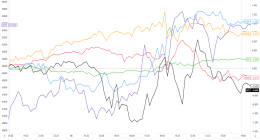
“Of course, we found many bacteria related with the skin microbiome,” says Piñar. “So when you are touching it, you are leaving your own microbiome there.” You might be thinking: So does that mean we now know what was crawling on da Vinci’s hands when he drew these masterpieces? Sadly, no, as the drawings have been handled by many, many other people in the five centuries since the master sketched them out. And to be clear, this genetic sequencing didn’t tell the researchers whether all these bacteria were dead or alive—just that they were present in some form.
Among human skin microbes, the researchers found high levels of the bacteria genus Moraxella, particularly Moraxella osloensis, which is responsible for the stink of dirty laundry. In addition, they detected the infamous bacteria Salmonella and E. coli., both of which bring turmoil to the human gut. They also found bacteria species specific to the guts of common flies and fruit flies, meaning that bugs had been brazenly defecating on priceless works of art—at least until someone put them into impeccably clean drawers for storage, or behind glass where they’re displayed, sealed up and kept at the perfect temperature and humidity. “As the drawings are nowadays conserved, there’s no way that insects can go in and, you know, make their things there,” says Piñar. “It is not possible anymore. So you have to think this could have come from the times when the drawings were not stored like they are now.”
Piñar and her colleagues also found Aspergillus, a mold that’s dangerous for some people to inhale, and detected species of the genus Penicillium, the fungus that gave us penicillin. Most worryingly for both the artworks and the conservators who handle them, the analysis turned up the fungus Alternaria, known as a “paper-spoiler” for its habit of … spoiling paper. It’s also an allergen that can be dangerous to inhale.
The team also found the fungi responsible for the “foxing” of paper, or the yellow-brown spots that form over the years. In addition to the DNA analysis, the researchers scoured the surface of the drawings with a microscope and spotted incrustations of calcium oxalate crystals produced by these fungi. “So you can infer a lot with this microscopic analysis and complement very well the molecular analysis that we do here,” says Piñar.








